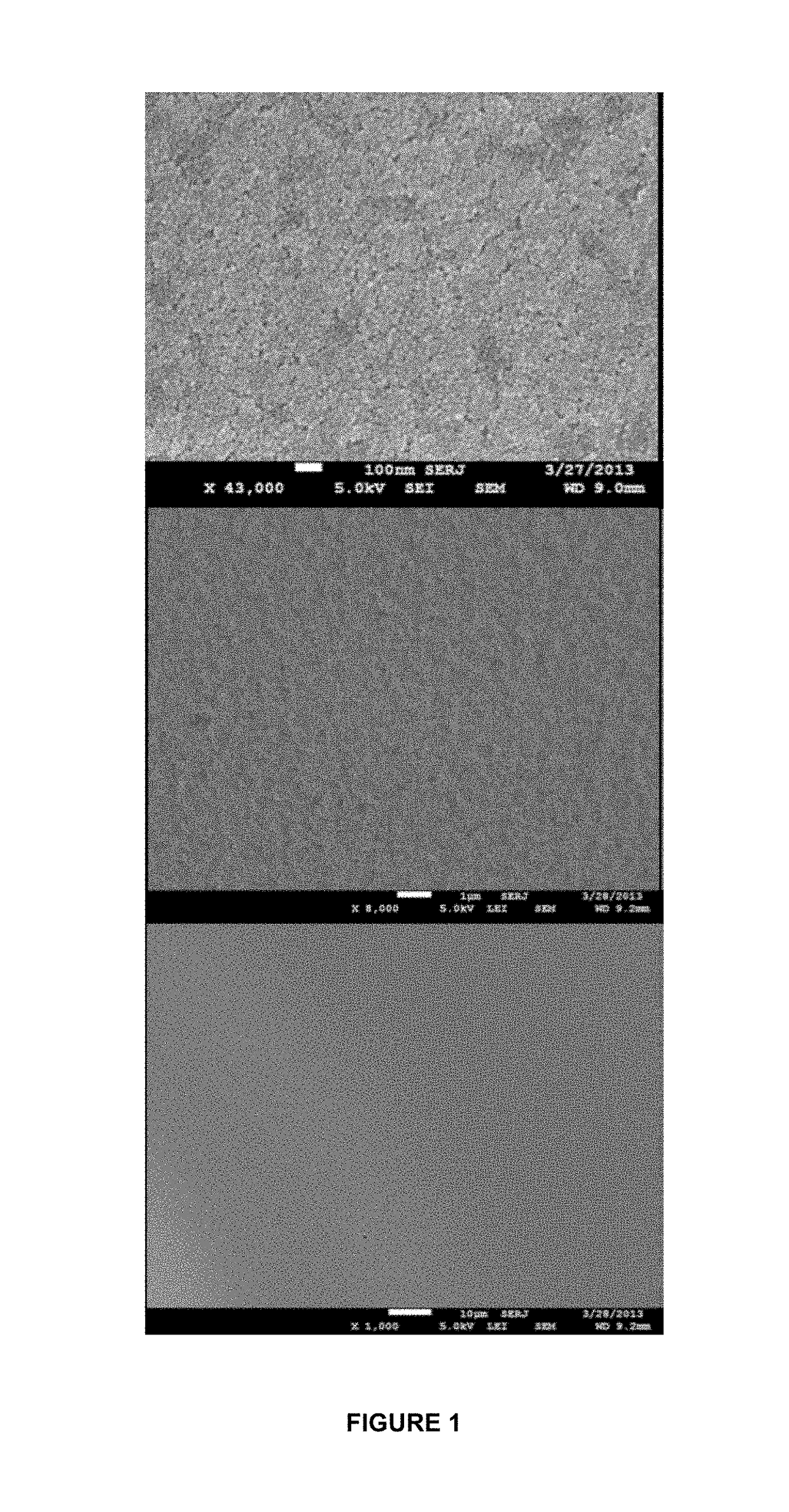Masked cation exchange lithography
a technology of colloidal nanocrystals and lithography, which is applied in the field of colloidal nanocrystals film patterning, can solve the problems of not providing the possibility of interfacing nanoparticles with different compositions using a single lithography step, not providing nanoscale resolution, and not allowing to deposit “pure” nc films, etc., and achieves new versatility and high resolution
- Summary
- Abstract
- Description
- Claims
- Application Information
AI Technical Summary
Benefits of technology
Problems solved by technology
Method used
Image
Examples
example 1
Nanocrystal Synthesis
[0054]CdSe nanocrystals (protocol as published by Talapin D. V. et al. Chem. Rev. 2010, 110(1): 389-458): TOPO (3.0 g), ODPA (0.280 g) and CdO (0.060 g) were mixed in a 50 ml flask, heated to ca. 150° C. and exposed to vacuum for ca. 1 hour. Then, under nitrogen, the solution was heated to 370° C. to dissolve the CdO until it turned optically clear and colorless. At this point, 1.5 g of TOP was injected in the flask and the temperature was allowed to recover, followed by the injection of the Se:TOP solution (0.058 g Se+0.360 g TOP).
[0055]After the synthesis, the nanocrystals were washed by addition of methanol, precipitated, and redispersed in toluene.
[0056]CdS nanorods: 50 mg of Cadmium oxide (CdO), 10 mg of cadmium chloride (CdCl2), 280 mg of octadecylphosphoric acid (ODPA), 80 mg of hexcylphosphonic acid (HPA), and 3 g of trioctylphosphine oxide (TOPO) were loaded in a reaction flask and then heated to 120° C. under vacuum for 1 h. Nitrogen was then pumped in...
example 2
Preparation of the NC Film and Cation Exchange
2.1. Deposition on Solid Substrate
[0059]Homogeneous NC films were deposited on a substrate, for example, by spin coating or via layer-by-layer deposition. The NC films with thickness of few monolayers, were spin-coated from a toluene solution onto Si / SiO2 substrates. In detail, 15 μL of NC solution at a concentration of 2 μM was deposited on previously cleaned Si / SiO2 substrates, already mounted in the spin coater, and after 2 min the sample was spun at 2500 rpm for 4 min. The uniformity of the obtained NC films even over large areas is clearly seen in FIG. 1.
2.2. Irradiation
[0060]In the next step, the NC films were exposed to an electron-beam using a Raith 150-two lithography system, with an acceleration voltage of 10 kV and an exposure dose in the range of 0.1-20 mC / cm2.
2.3. Cation Exchange
[0061]In this example, CdSe / CdS NCs were converted to Cu2-xSe / Cu2-xS following published cation exchange procedures (Jain P. K. et al. J. Am. Chem. ...
example 3
Masked Cation Exchange in CdSe Nanocrystal Films
[0070]The “masked cation exchange” approach according to the present application, applied to Cd chalcogenide films, can be used to create luminescent patterns in NC films, and to fabricate electrical circuit patterns. FIG. 7a shows a Photo Luminescence (PL) image of a NC film where two pads are connected by a straight wire with 10 μm width: here pads and wire consist of Cu2-xSe / Cu2-xS, whereas the surrounding material is CdSe / CdS. For these experiments, the samples were kept under air for 24 h prior to measurements. Electrical measurements under ambient conditions were performed with a micromanipulator probe station (Suss) using tungsten micromanipulators as probes. The current was recorded with a Keithley 2612 source-meter. The current measured on the wire connecting the two pads is reported in FIG. 7b by the solid black line, yielding Ohmic conductivity of 250 μS / cm, while the CdSe / CdS regions did not conduct any current above the de...
PUM
| Property | Measurement | Unit |
|---|---|---|
| thickness | aaaaa | aaaaa |
| temperatures | aaaaa | aaaaa |
| temperature | aaaaa | aaaaa |
Abstract
Description
Claims
Application Information
 Login to View More
Login to View More - R&D Engineer
- R&D Manager
- IP Professional
- Industry Leading Data Capabilities
- Powerful AI technology
- Patent DNA Extraction
Browse by: Latest US Patents, China's latest patents, Technical Efficacy Thesaurus, Application Domain, Technology Topic, Popular Technical Reports.
© 2024 PatSnap. All rights reserved.Legal|Privacy policy|Modern Slavery Act Transparency Statement|Sitemap|About US| Contact US: help@patsnap.com










